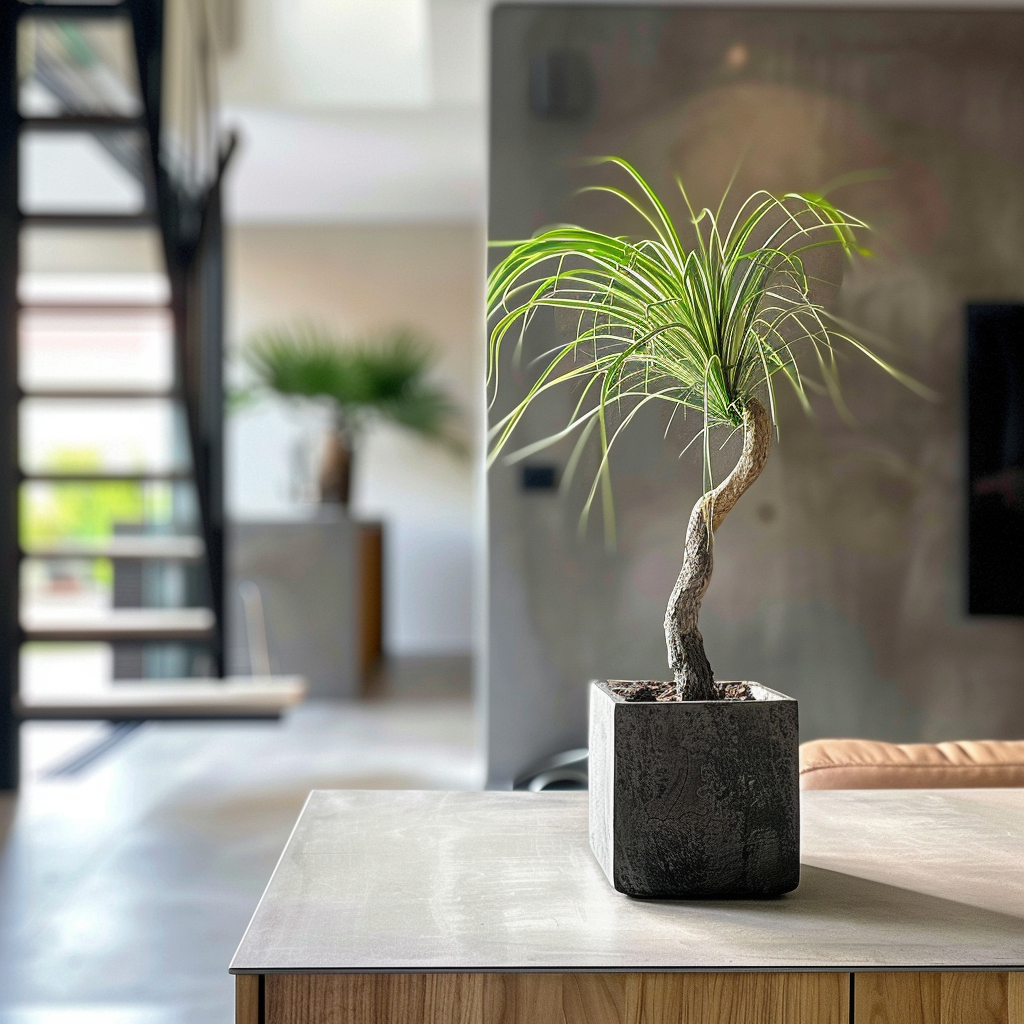Privacy Trees
Ponytail Palm
Ponytail Palm
Couldn't load pickup availability
The Ponytail Palm Tree, with its unique bulbous trunk and cascading, fountain-like leaves, is a favorite for indoor greenery enthusiasts seeking a low-maintenance and visually striking plant. Known for its adaptability and drought-tolerance, it's perfect for both homes and offices, creating a tranquil and inviting atmosphere. Easy to care for, this tree thrives with minimal attention, making it an ideal choice for both novice and expert gardeners.


Product details

Why are Ponytail Palm trees great for privacy?
Ponytail Palms are not typically used for privacy as they are more ornamental and are best suited as accent plants in indoor settings. However, they can create a sense of privacy by drawing attention with their distinctive appearance, which can distract from less desirable views.
Planting guide
To ensure your Ponytail Palm thrives, it's important to position it in a well-draining pot with cactus or succulent soil and ensure ample bright, indirect sunlight.
How to plant Ponytail Palm trees?
Begin by selecting a pot with drainage holes that is slightly larger than the plant's root ball. Fill it with a gritty, well-draining soil mix, ideally designed for succulents or cacti. Gently place the Ponytail Palm in the pot and backfill with soil, ensuring the base remains above the soil line to prevent rot.
When to plant Ponytail Palm trees?
The ideal time to plant a Ponytail Palm is during the spring or early summer when the plant's growth activity is at its peak. This allows it to acclimate and establish its roots more quickly. However, since it's primarily an indoor plant, you have flexibility to repot any time of year with appropriate care.
How far apart should you plant Ponytail Palm trees?
Being more ornamental than functional for privacy, Ponytail Palms are usually planted individually in pots indoors. However, if placed outdoors in suitable climates, space them at least three feet apart to allow room for their distinctive base and cascading leaves to spread comfortably. Proper spacing promotes healthy air circulation, reducing potential pest and disease issues.
About
The Ponytail Palm is an ornamental plant known for its unique shape and easy-care qualities, making it a fascinating addition to any indoor setting.
How tall does a Ponytail Palm tree grow?
Ponytail Palms typically reach heights of 6 to 8 feet indoors, though they can grow taller in their native outdoor habitats. These heights make them suitable for indoor environments, providing a striking vertical element. Their compact size indoors is perfect for showcasing their unique foliage without overwhelming a room.
How long does a Ponytail Palm tree live?
With proper care, a Ponytail Palm can live for several decades, often outliving its owners. Its long lifespan makes it a treasured heirloom plant that can be passed down through generations. Ensure consistent care and occasional repotting to maintain health throughout its life.
How fast do Ponytail Palm trees grow?
Ponytail Palms are slow growers, typically adding only a few inches per year. This slow growth is ideal for indoor gardeners who prefer low-maintenance plants that require infrequent repotting. Patience is key, as their gradual development allows time to appreciate their evolving beauty.
How to care for Ponytail Palm trees?
Caring for a Ponytail Palm is straightforward and suitable even for those new to plant care. Place it in bright, indirect light for best results, and allow the top inch of soil to dry out between waterings. Occasional fertilization during the growing seasons of spring and summer will support its health. Regularly check for pests and ensure good air circulation to prevent infestations.
When to prune Ponytail Palm trees?
Pruning is best done in early spring, just before the growing season begins. This timing allows the plant to recover and grow optimally. Remove any brown or damaged leaves to maintain its appearance and encourage healthy growth.
How to prune Ponytail Palm trees?
Use clean, sharp scissors or pruning shears to make precise cuts without damaging the plant. Trim back dead or yellowing leaves at their base, taking care not to cut into the trunk. Minimal pruning is recommended due to their slow growth, ensuring the plant remains healthy and retains its natural shape.

